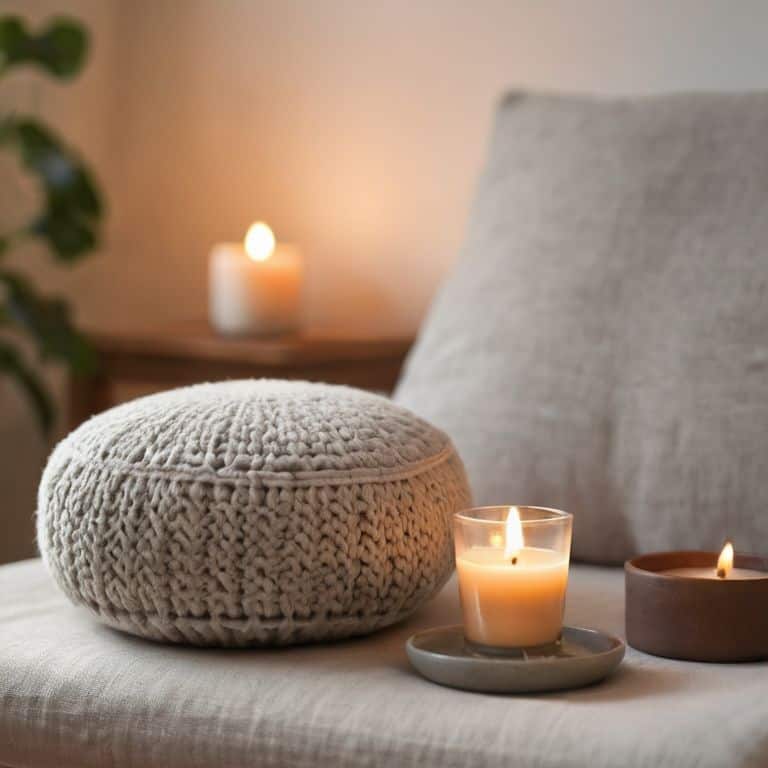I still remember the days when I thought mindfulness was only for yoga mats and meditation rooms. But as someone who’s experienced the dark side of burnout, I’ve learned that practicing mindfulness throughout the day is not just a luxury, but a necessity. The myth that you need to set aside hours for mindfulness is exactly that – a myth. In reality, how to practice mindfulness throughout the day is all about weaving small moments of awareness into your daily routine, even on the craziest of days.
As you read this article, I promise to share with you my favorite, no-nonsense tips on how to practice mindfulness throughout the day. You’ll learn how to transform your daily commute, work breaks, and even household chores into opportunities for mindfulness. I’ll give you actionable advice on how to start small, be consistent, and make mindfulness a sustainable part of your lifestyle. My goal is to help you build a stronger, more resilient you, one mindful moment at a time.
Table of Contents
Guide Overview: What You'll Need

Total Time: 10-15 minutes per session, several times a day
Estimated Cost: $0 – $10
Difficulty Level: Easy
Tools Required
- Smartphone (with mindfulness app)
- Journal (for recording thoughts and reflections)
Supplies & Materials
- Comfortable seating in a quiet space
- Calming music or nature sounds (optional)
Step-by-Step Instructions
- 1. First, let’s start by setting a clear intention to prioritize mindfulness throughout the day. This means committing to taking short breaks and practicing mindfulness exercises, even when you feel busy or overwhelmed. Take a few minutes each morning to plan out your day, including scheduling time for mindfulness practices, and make sure to color-code these moments in your digital calendar as non-negotiable rest time.
- 2. Next, begin by practicing deep breathing exercises as soon as you wake up. Sit comfortably in bed or on a cushion on the floor, close your eyes, and focus on taking slow, deep breaths in through your nose and out through your mouth. Try to breathe deeply into your belly, feeling your diaphragm expand and contract with each breath. Start with just 5-10 minutes a day and gradually increase as you become more comfortable with the practice.
- 3. As you go about your day, pay attention to your physical sensations and use them as reminders to practice mindfulness. For example, every time you feel your feet touch the ground, take a deep breath and notice the sensation of your feet connecting with the earth. You can also use everyday activities like brushing your teeth or washing your hands as opportunities to practice mindfulness by focusing on the sensations in your body and the sights and sounds around you.
- 4. To make mindfulness a habit, try to incorporate it into your daily routine. For instance, you can practice mindfulness while you’re waiting in line, sitting at a red light, or during commercial breaks while watching TV. Take a few deep breaths, notice your surroundings, and focus on the present moment. Remember, the goal is not to achieve a specific state but to cultivate awareness and acceptance of the present moment.
- 5. One of my favorite ways to practice mindfulness is through short meditation sessions. You can use a guided meditation app or simply focus on your breath, noticing when your mind wanders and gently bringing it back. Start with short sessions, even just 2-3 minutes, and gradually increase as you become more comfortable with the practice. You can also try body scan meditation, where you lie down or sit comfortably and bring awareness to different parts of your body, starting from your toes and moving up to the top of your head.
- 6. In addition to formal meditation practice, you can also cultivate mindfulness through physical activities like yoga or tai chi. These practices combine movement with deep breathing and can help you develop greater body awareness and balance. If you’re new to these practices, consider taking a class or following along with online tutorials to get started.
- 7. As you practice mindfulness throughout the day, remember to be gentle with yourself. It’s easy to get caught up in self-criticism or frustration when your mind wanders or you feel like you’re not doing it “right.” But the truth is, mindfulness is a practice, and it’s okay if your mind wanders. Simply acknowledge the thought and gently bring your focus back to the present moment. With time and consistency, you’ll find that mindfulness becomes a natural part of your daily routine, and you’ll experience greater calm, clarity, and inner peace.
Mindful Daily Grind

As I guide my clients through their journey to wellness, I’ve noticed that mindfulness exercises for stress relief can be a total game-changer. It’s not just about finding a quiet spot to meditate, but also about _incorporating mindfulness into daily routines_. For me, that means starting the day with a few minutes of deep breathing, focusing on the sensation of the air moving in and out of my body. This simple practice helps set a positive tone for the rest of the day.
When it comes to _mindful movement and exercise_, I’m a big fan of restorative yoga. It’s a great way to slow down and tune into your body, which can be especially helpful on busy days. By combining physical movement with a mindful approach, you can reduce stress and increase feelings of calm. I also love taking short walks outside, _practicing mindfulness in nature_ by paying attention to the sights, sounds, and smells around me.
To make mindfulness a sustainable part of your daily routine, I recommend scheduling it into your calendar – yes, really! Treat it as non-negotiable me-time, just as you would any other important appointment. By prioritizing mindfulness, you’ll start to notice the _benefits of mindful breathing_ and other exercises, from reduced stress to improved focus. Remember, it’s all about making small, consistent changes that add up over time.
Benefits of Mindful Breathing
As I guide my clients through mindful breathing exercises, I’ve seen profound shifts in their ability to navigate chaotic days. By dedicating just a few minutes to focused breathing, they’re able to calm their nervous system and approach tasks with clarity. This, in turn, enhances their productivity and creativity. I’ve experienced it myself – on particularly overwhelming days, taking a few conscious breaths helps me regain my footing and tackle challenges with renewed energy.
Regular mindful breathing practice also has a cumulative effect, reducing overall stress and anxiety. By incorporating it into your daily routine, you’ll become more resilient to the pressures of your online business, and better equipped to maintain a healthy work-life balance.
Incorporating Mindfulness Exercises
To incorporate mindfulness exercises into your daily routine, start small. I recommend beginning with short, 5-minute breathing sessions, where you focus on the sensation of the breath moving in and out of your body. You can do this while sitting at your desk, waiting in line, or even during commercial breaks while watching TV. As you get more comfortable with mindfulness, you can gradually increase the duration and variety of your exercises.
I like to think of mindfulness as a sprinkle of self-care that can be added to even the most mundane tasks. For example, try paying attention to the sensations in your feet while you’re brushing your teeth, or notice the sounds around you while you’re walking to your car. These tiny moments of mindfulness can add up and make a big difference in how you feel throughout the day.
Weaving Mindfulness into Your Daily Routine: 5 Essential Tips
- Start small: begin with 5-10 minute mindfulness exercises, such as deep breathing or body scan meditation, to set a daily intention and boost focus
- Listen to your body: take short breaks to stretch, move your body, or practice some quick yoga poses to release tension and increase blood flow
- Practice mindful transitions: use daily transitions like going from one task to another, or from work to personal time, as opportunities to take a few deep breaths and refocus
- Bring mindfulness to daily activities: pay attention to your senses while engaging in routine tasks like eating, showering, or walking, to cultivate a sense of presence and gratitude
- Schedule mindfulness into your calendar: treat mindfulness practices as non-negotiable appointments, and color-code them to ensure they stand out amidst other commitments, just as you would any other important meeting or deadline
Key Takeaways for a Mindful Day
I’ve found that incorporating just 5-10 minutes of mindful breathing into my daily routine can significantly reduce stress and increase focus, even on the most chaotic days
By prioritizing mindfulness exercises, such as mindful walking or body scan meditation, I’ve been able to cultivate a sense of calm and clarity that stays with me throughout the day
Remember, the goal of mindfulness isn’t to achieve some sort of mystical state, but to simply be more present and aware in your daily life – and that’s something that can be practiced and perfected over time with consistent effort and patience
Mindfulness in Motion
As I always say, mindfulness isn’t about finding an extra hour in your day, it’s about being fully present in the hours you already have – and that’s a game-changer for any busy creator.
Gabriela Rossi
Mindfulness in Daily Life: A Path to Wellness

As we’ve explored throughout this guide, incorporating mindfulness into your daily routine can have a profound impact on both your mental and physical well-being. From the benefits of mindful breathing to the simple yet effective mindfulness exercises that can be done anywhere, it’s clear that mindfulness is not just a practice, but a way of living. By embracing small, sustainable changes, you can begin to weave mindfulness into the fabric of your daily life, leading to greater calm, clarity, and resilience in the face of life’s challenges.
As you embark on this journey of mindfulness, remember that it’s not about achieving a specific state or destination, but about cultivating present-moment awareness in every aspect of your life. By doing so, you’ll not only improve your own well-being but also become a more compassionate, focused, and inspired version of yourself. So, take a deep breath, be gentle with yourself, and trust that the power of mindfulness will guide you towards a more balanced, joyful, and fulfilling life.
Frequently Asked Questions
How can I remember to practice mindfulness when I'm in the middle of a chaotic workday?
I totally get it – chaos can be overwhelming. To stay on track, I recommend scheduling mindfulness breaks in your calendar, just as you would any other important task. Set a reminder to take a few deep breaths, stretch, or practice a quick meditation. I even color-code my own rest time to ensure I prioritize it – give it a try and see what works for you!
What are some simple mindfulness exercises that can be done at my desk without drawing attention to myself?
One of my favorites is the “4-7-8” breathing technique: inhale for 4 seconds, hold for 7, and exhale for 8. You can do this discreetly at your desk, and it’s incredibly calming. I also recommend subtle shoulder rolls and wrist stretches to release tension. These tiny exercises can be a game-changer for your focus and productivity.
Can mindfulness practices really make a difference in reducing stress and increasing productivity, or is it just a trendy concept?
I’ve seen it firsthand: mindfulness practices can be a total game-changer for stress and productivity. As someone who’s been in the trenches of burnout, I can attest that it’s not just a trend – it’s a powerful tool to calm your mind and boost focus. By incorporating simple mindfulness exercises into your daily routine, you can experience a significant shift in how you approach work and life.
